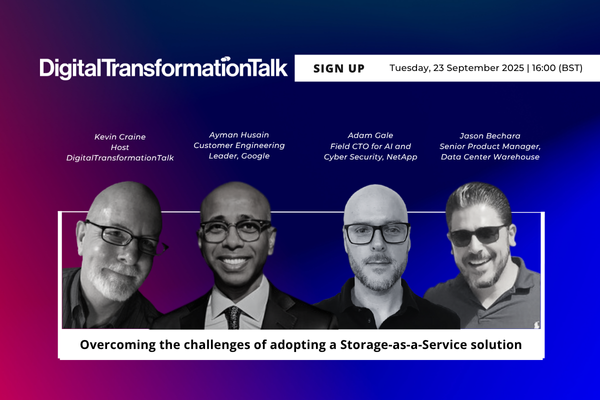The Expert View: How AI is transforming the future of lending and credit risk
Sponsored by nCino
AI is a hot topic, but banks in Belgium are still figuring out how to integrate the technology into the lending chain. Speaking to 15+ senior executives from leading European Financial Institutions at a Business Reporter Breakfast Briefing in Brussels, Benoit Lafort, Regional Vice President at nCino, outlined several challenges that remain.
AI is rarely embedded in lending decisions; its use is mostly limited to communication and administrative support. Use of AI-based tools such as CoPilot to assist in communication and PowerPoint presentations is widespread, either within a corporate environment or offline. One participating bank is collaborating with AI labs to develop AI models for risk and decision support.
Although boards talk a lot about AI, it mostly comes without significant action. “It’s a buzzword,” one participant said. There are often no proper resources or plans on how to integrate AI into the workflow. And measuring whether investment in AI tools pays off is difficult. While automation offers clear savings in administrative areas, quantifying the impact on risk, market share and customer satisfaction is more complex. Some banks are building technology in house, while others are buying off-the-shelf products to adapt to their personal use.
Opportunities
The opportunities to streamline repetitive work are clear – they can be applied, for example, in verification and compliance, monitoring and evaluation after loans have been provided, and financial literacy.
Allowing AI to take over some tasks will not only provide a more enjoyable work atmosphere but also frees up employees to spend more time on higher-value activities such as analysing complex cases or relationship management.
Some of Ncino’s clients are already using its AI tools to assist in document preparation, data input and generation of internal reports and credit memos.
In terms of evaluation, there is a demand for an early warning system which includes monitoring customer behaviour, sector trends and market changes, enabling proactive risk management. Banks also see opportunities in streamlining KYC data to provide additional insights and ease the burden of reporting.
Prescoring clients similar to what is being done in Denmark is a technique that could be used in Belgium; there is good data available for SMEs. However, on the consumer side, there is less data available than in other markets. For example, salary information in Sweden is available publicly, while in Turkey it must be requested from the government.
Financial literacy among some clients is low – but AI could help by explaining financial products and their application documents. In the Nordics, AI is already being harnessed to help educate clients on bank websites.
The Belgian market has its own complexities, such as the need to provide clients with documents in three languages. Again, AI could be of help here. Furthermore, expat clients without a credit history in Belgium pose a challenge, as the exchange of data between banks and notaries on a European level is still lacking.
Risks
There was general reluctance among attendees to adopt AI-driven decisions, driven by concerns about bias, data quality and the loss of human judgment. Participants at the breakfast felt that AI could not provide the nuanced human analysis required for complex, non-standard cases, particularly in emerging markets.
Concerns about transparency also persist. Banks want, and regulators expect, to be able to tell customers why their loan was approved or, more importantly, rejected. AI models currently do not allow for this. “We see that AI can help in decision-making, but it needs to be explainable,” said one participant. “If it’s just a black box, that’s not something that we, as a current stage, can accept.”
Regulation adds a further hurdle. The regulation on the use of AI in banking in Belgium is unclear. There is the AI Directive at a European level, but this legislation leaves a lot of room for interpretation, and the Belgian regulator is yet to apply nuances. The Belgian market is also, said one participant, “maybe less acceptant of technological challenges”.
Participants expected that industry practice and regulatory adaptation would evolve together. Current regulatory requirements stipulate that clients must be informed when decisions are made by AI and have recourse to a manual review.
The Enduring Role of Human Judgment
Most participants still felt there was a need for humans to be in the loop. Right now, that is at every stage of the credit decision process. How much that will be the case in future, however, would ultimately be “a marketing decision”, one participant said.
Most importantly, consumers still like speaking to a human being. Participants noted that acceptance of AI varies by market and demographic, with younger clients not necessarily more willing to engage with AI-driven services for long-term or complex products such as mortgages.
Bankers themselves also are not ready to trust the AI. Analysts don’t always like having AI do the initial work and having to look at partial analysis. “They want to get an overview of all the facts,” one participant said.
The ethical implications of AI decision-making were discussed, with a clear preference among attendees for explainable models and human oversight.
Integrating AI with legacy systems is complex, and finding people with the right programming language skills required for this can be difficult. Yet participants felt that it was still too early to have to think about training juniors for when AI takes over more of the initial credit analysis, as the use of AI is not widespread enough to change the way banks hire in Belgium.
However, there is an awareness that the use of AI will grow and that this will demand a new set of skills – most notably flexibility – to adapt to new technology. Employees at some banks are also being trained on prompting, in anticipation of a larger role for AI.
Conclusion
Banking is one sector where AI could play a very large role. Non-banking competitors are leveraging technology to offer faster, more streamlined services, prompting banks to accelerate their own AI adoption to remain competitive. Embedded finance and digital lending platforms are reshaping the landscape, especially in consumer finance. “In the long term, we are going to need to use AI to the full extent,” said one participant. “We are one of the service providers that is really a good use-case for AI to replace us.”
While AI holds significant promise for automating routine tasks, improving efficiency and supporting compliance, there remain substantial challenges in integrating it into core credit decision-making. Explainability, human oversight and regulatory alignment are essential to advancing AI adoption in banking.
To learn more, please visit: www.ncino.com

Business Reporter Team
Most Viewed
Winston House, 3rd Floor, Units 306-309, 2-4 Dollis Park, London, N3 1HF
23-29 Hendon Lane, London, N3 1RT
020 8349 4363
© 2025, Lyonsdown Limited. Business Reporter® is a registered trademark of Lyonsdown Ltd. VAT registration number: 830519543





